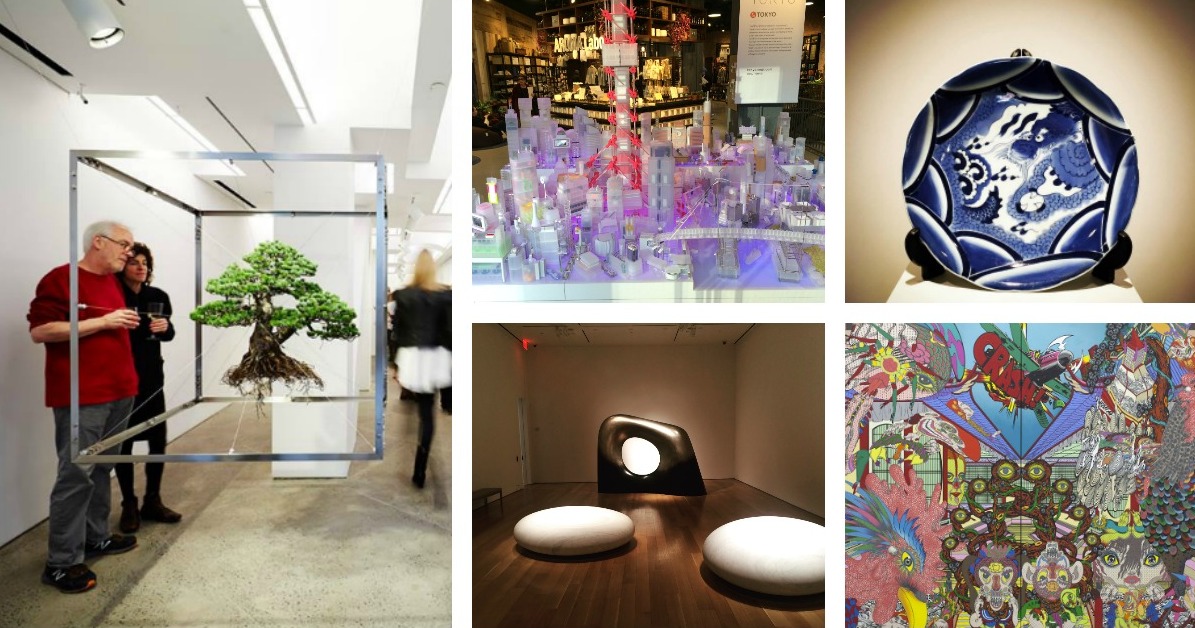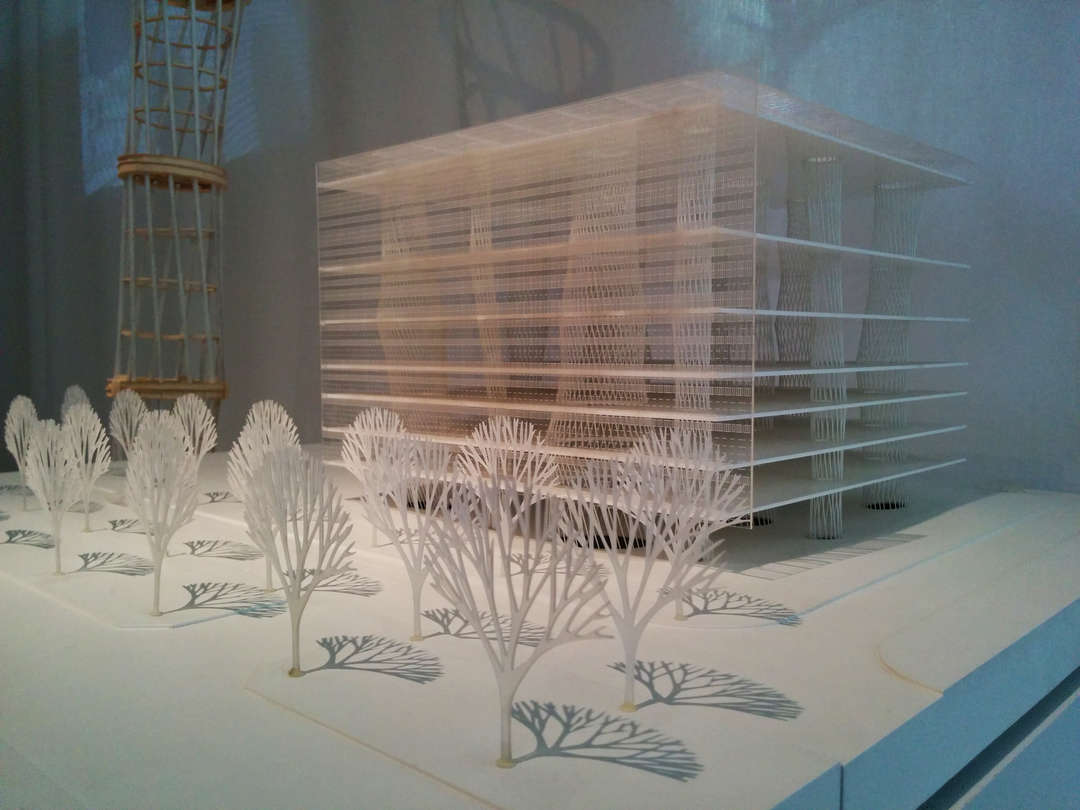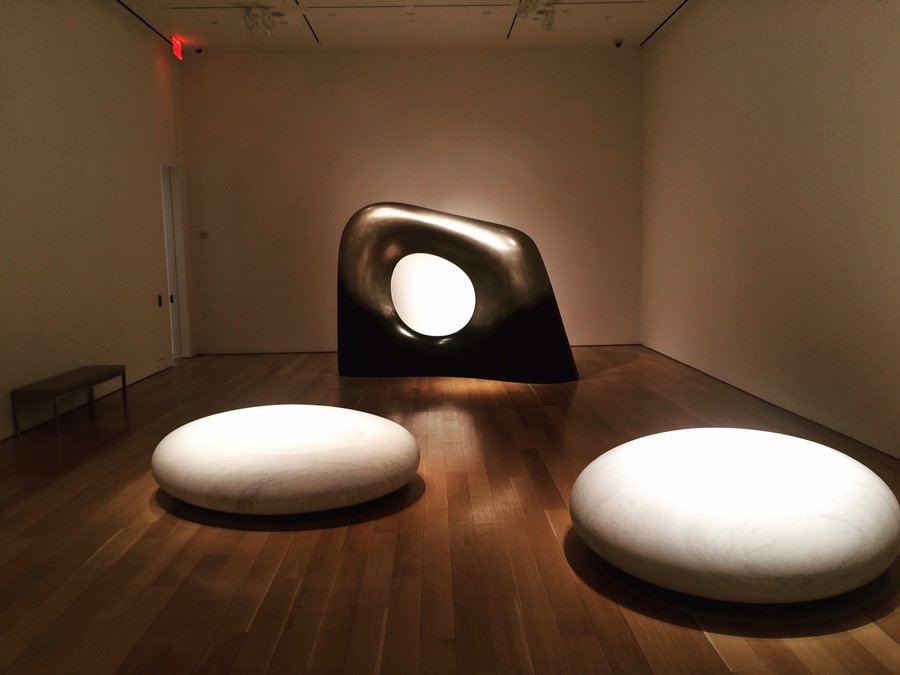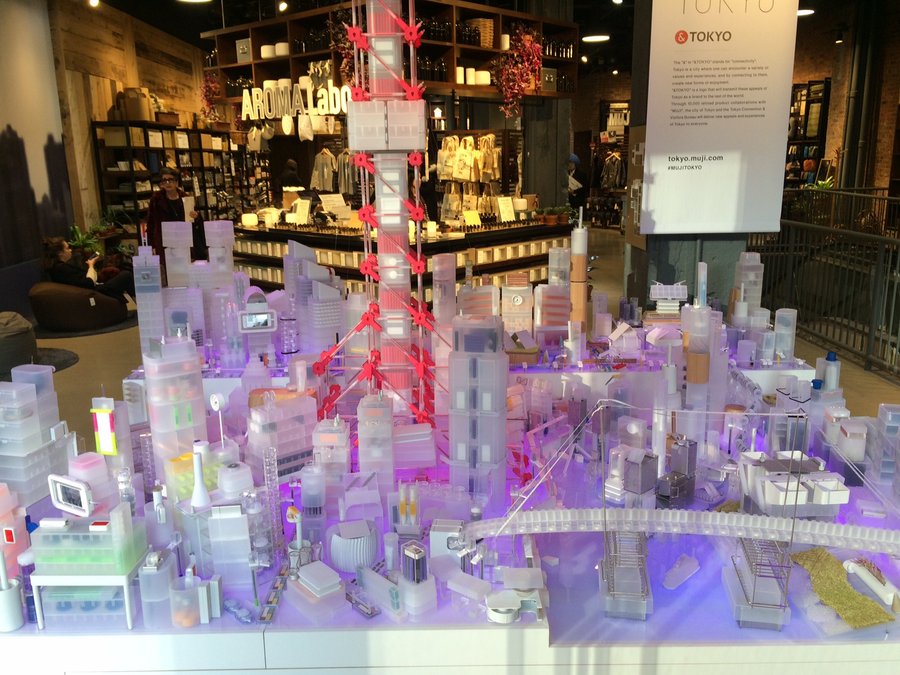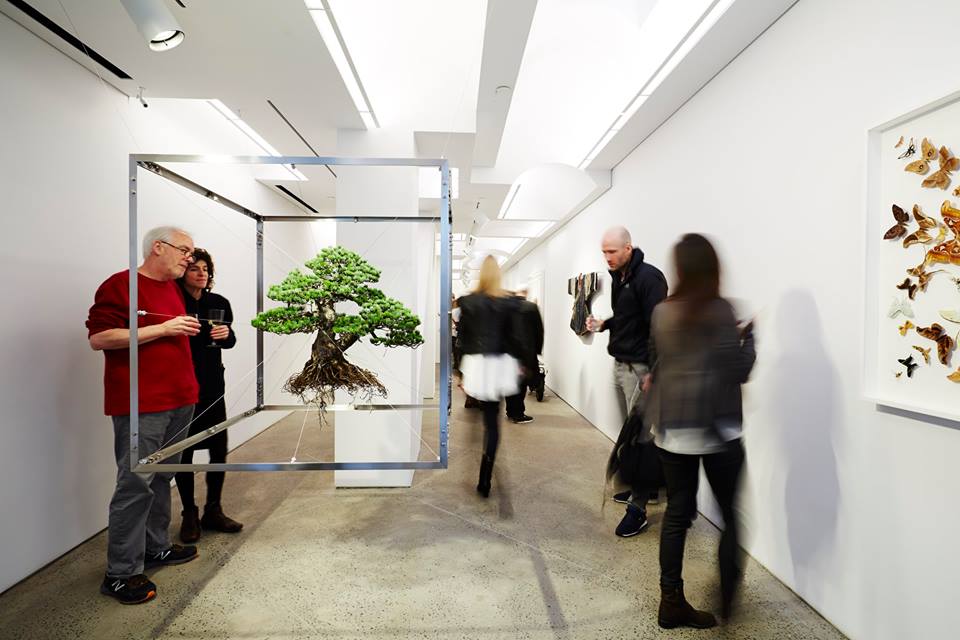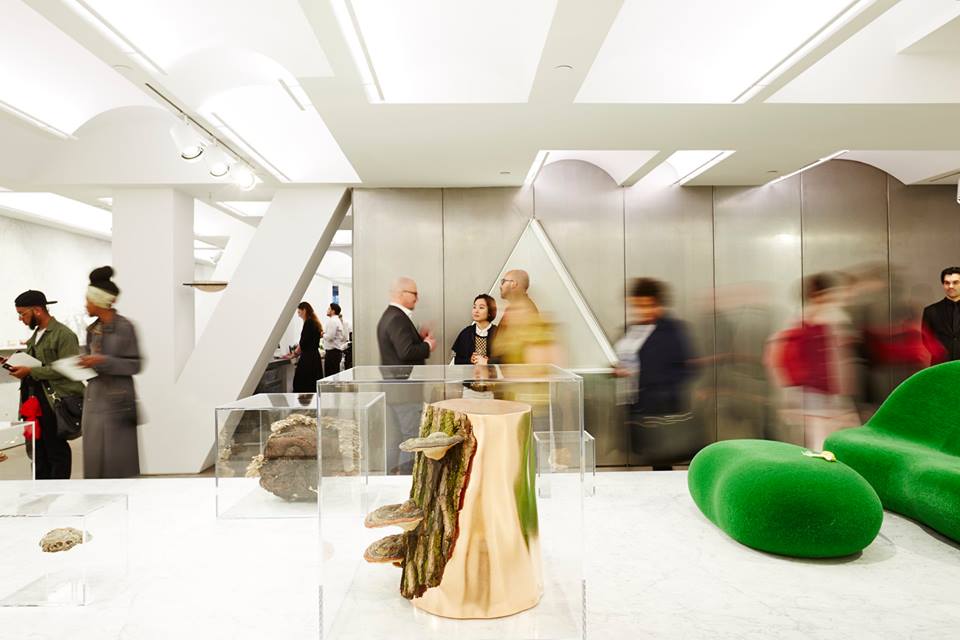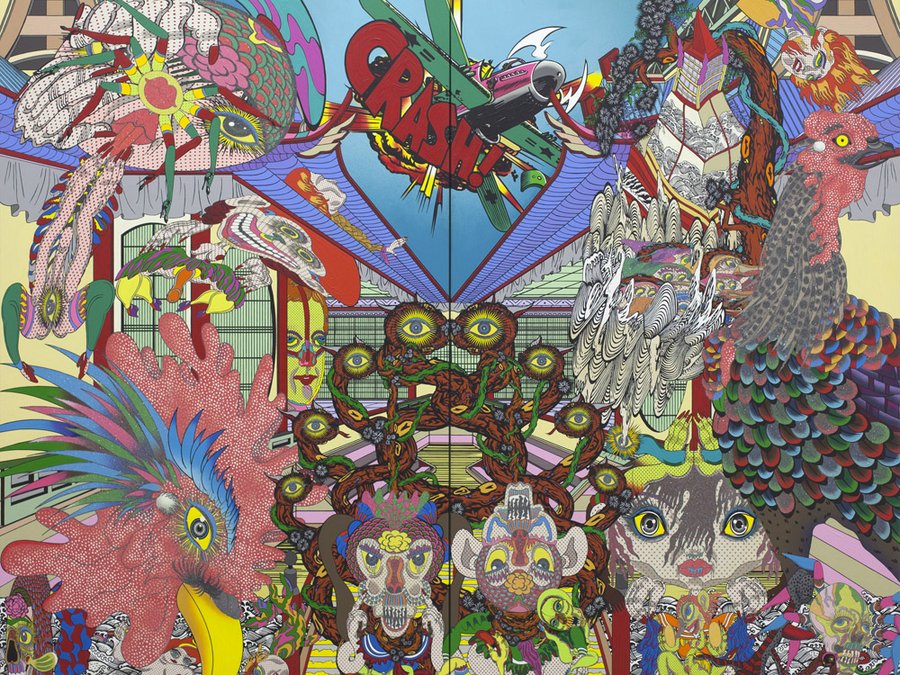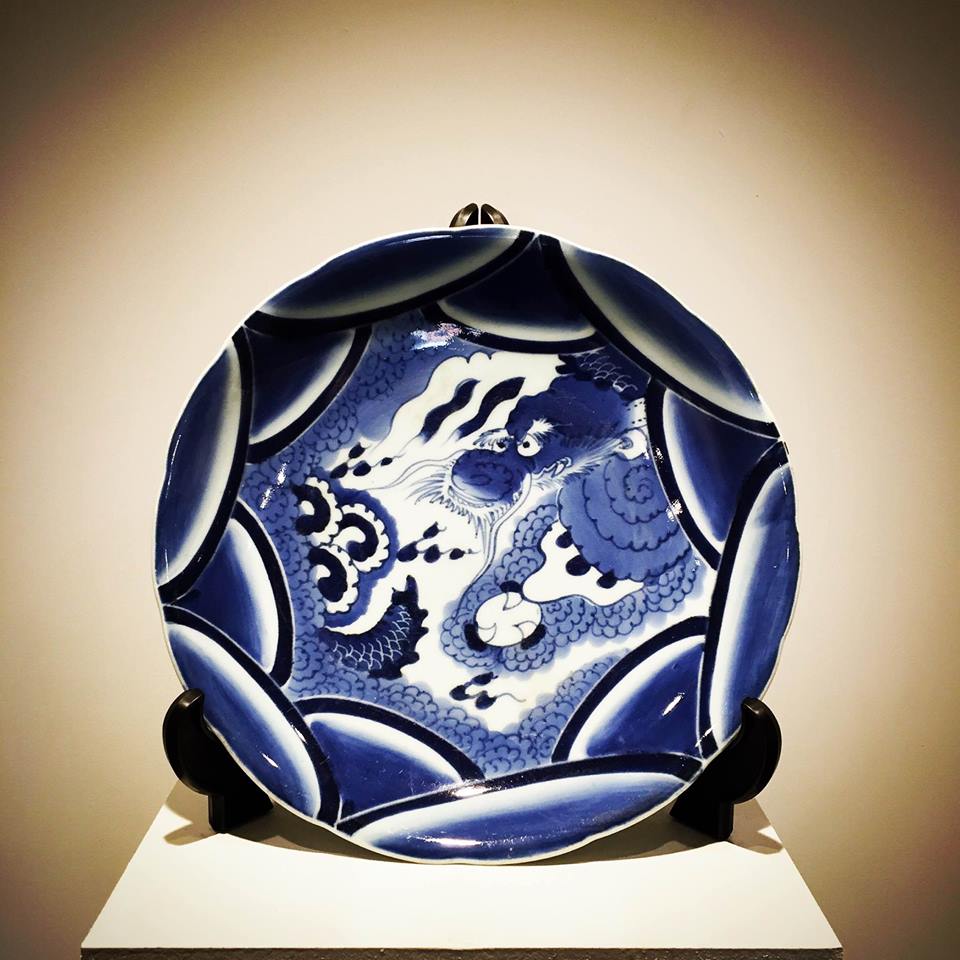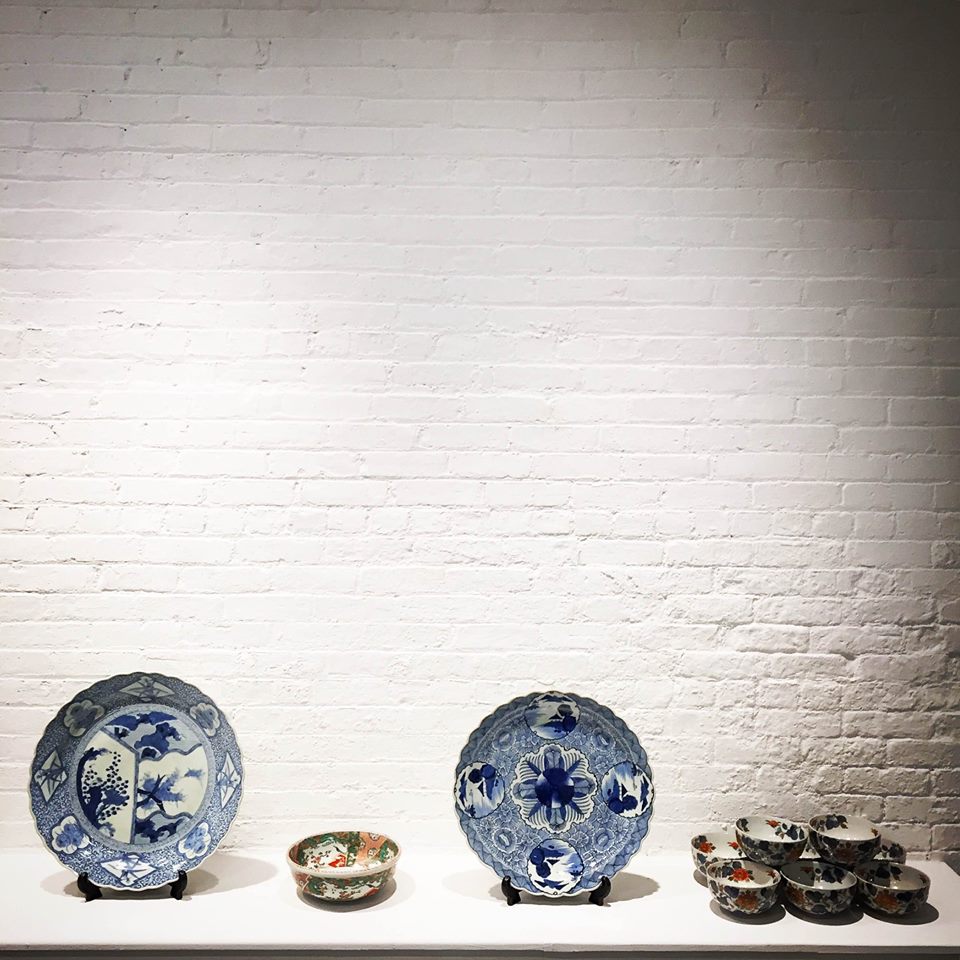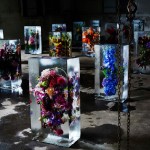Although the winter this year in New York was one of the warmest in recent memory, we’re still excited that Spring is finally here. March brings warmer temperatures but it also brings new art shows. So why not get outside and enjoy both? We’ve put together a simple map of our top picks to see this Spring for lovers and admirers of Japanese art & design!
1. A Japanese Constellation
(The Museum of Modern Art – through July 4)
We recommend starting at MoMA in Midtown. The recently opened architecture show, “A Japanese Constellation,” focuses on the family tree of architects developed around Toyo Ito, and his many disciples. “Organized through intersecting spaces separated by translucent curtains, drawings, models, and images reveal the structural invention, non-hierarchical thinking, and novel uses of transparency and lightness that link these practices.” This is the only show on our list that requires admission.
2. Touching Time: The Sculpture of Kan Yasuda
(Christie’s NY – through March 26)
After MoMA, walk 5 blocks down to Rockefeller Plaza where, among other things, is the headquarters of auction house Christie’s. Despite popular belief, anyone can enter and see current exhibitions. And right now: a showing of monumental sculptures by Kan Yasuda. “His minimalist, smoothly undulating works in marble and bronze are critically acclaimed in his native Japan and throughout Europe.” But this show is ending soon so hurry!
3. 10,000 Shapes of Tokyo
(MUJI 5th Ave – through April 24)
From Rockefeller Plaza walk down another 8 blocks towards Bryant Park to the new MUJI Flagship Store on 5th Avenue. Here you’ll find a fun installation of a miniature replica of Tokyo made from 10,000 MUJI products. If you own anything from the minimal lifestyle retailer you’ll know that their products are designed to precise calculations and specifications, often with architectural elements, making them perfect for such an installation. While you’re there, take a break. Grab some lunch at Zaiya and eat at an outdoor table in Bryant Park.
4. “Human l Nature” by Makoto Azuma
(Chamber NYC – through April 30)
Next you’ll want to get out of Midtown and head to Chelsea. Your first stop: Chamber NYC, the boutique gallery of curator-selected presentations. After presenting his self-sustaining bonsai ecosystem here last year, Makoto Azuma (“the flower whisperer”) is showing a larger collection of objects that include his signature suspended bonsai, fungi coated in metal and an astroturf covered bicycle and sofa.
5. Visible Darkness, Invisible Darkness by Keiichi Tanaami
(Sikkema Jenkins – through April 23)
After you’ve gotten your fair share of nature art, and possibly explored the High Line, just a block away you’ll find the postwar pop artist Keiichi Tanaami showing relatively new work at Sikkema Jenkins. The vibrant, psychedelic compositions hardly look like they were done by an 80-year old artist, and are a testament to the decades long career he’s had working in a broad array of mediums. “This body of work contains powerful images drawn from dreams and memories, most notably those from his experiences as a child during World War II.”
6. Antique Imari Porcelain
(hpgrp Gallery – through April 9)
After that psychedelic trip, wind down with some soothing antique porcelain. Head down to Tribeca (35-min walk along the river, if you’ve got the energy) to hpgrp gallery, where you’ll find on display a collection of beautiful early Imari porcelain. You’ll not only see lush colors and detailed drawings but also get a chance to immerse yourself in some history – “Before the 16th century, China succeeded in firing Porcelain and dominated the export market. However from the early 17th century, craftsmen from Korea came to Arita in Saga prefecture, where porcelain was fired for the first time in Japan. With the end of the Ming Dynasty and political chaos that followed, China was no longer able to export This led to the proliferation of Japanese porcelain throughout the world, including Europe, where having early Imari ware to display in the home held a certain status among the wealthy.”

